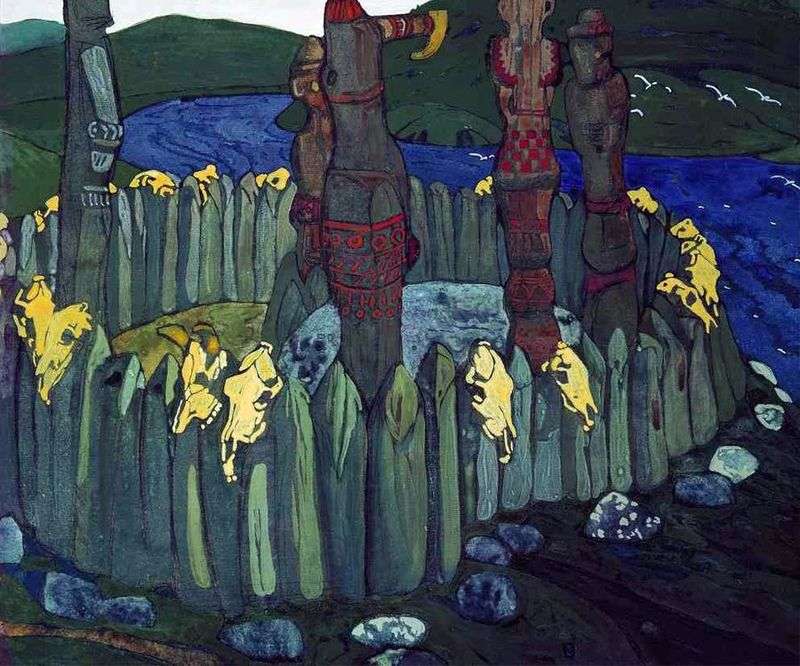
In Paris, where N. K. Roerich traveled in 1900, he continued to work on the “Slavic” series of paintings. There was a painting “Idols”.
Even before his departure abroad, the imagination of the artist was stirred by Idols – wooden images of ancient pagan deities. He first saw them at Stasov and received one as a gift. Idols resembled Roerich mounds, excavated in the tsarist-rural district. The people kept the tradition that they came to pray here in ancient times. This led to the idea of creating the painting “Idols”.
In the “Idols” a pagan temple is depicted: behind a palisade with skulls of sacrificial animals, among quaint stone idols, the vedun old man wanders in thought, the world of Slavic beliefs revives on the canvas, the atmosphere of ancient sacraments is felt. This work on the picturesque language is significantly different from earlier ones. In it appear generalized form, a clear picture, completeness, internal integrity of the composition.
In the center of the canvas is a high hill. Bright blue ribbon towers around him fast river with steep banks. On this hill, protected by nature itself, there is an ancient pagan temple, a place where people were going to pray and offered sacrifices to the gods. In the middle of the temple rises the biggest idol, the main pagan deity, around which smaller ones are visible.
The sacred place is surrounded by a palisade of logs. The ends of the logs are hewn. On them are the skulls of animals sacrificed to the gods. The ring composition, the strict rhythm of the verticals, the sophistication of the silhouettes, the clarity of the generalizing line are perfectly found – all this gives the picture an epic sound. Together bind the majestic tranquility of nature and the peculiar beauty of the temple.
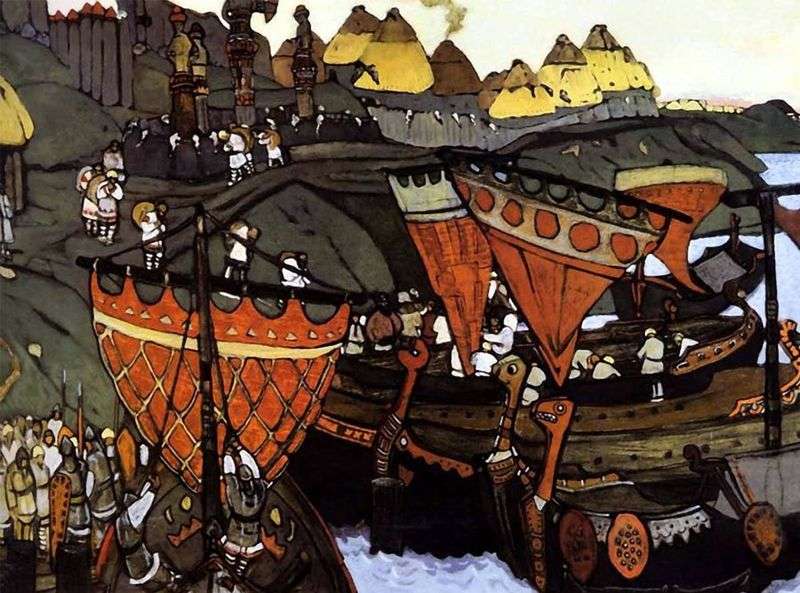 Slavs on the Dnieper by Nicholas Roerich
Slavs on the Dnieper by Nicholas Roerich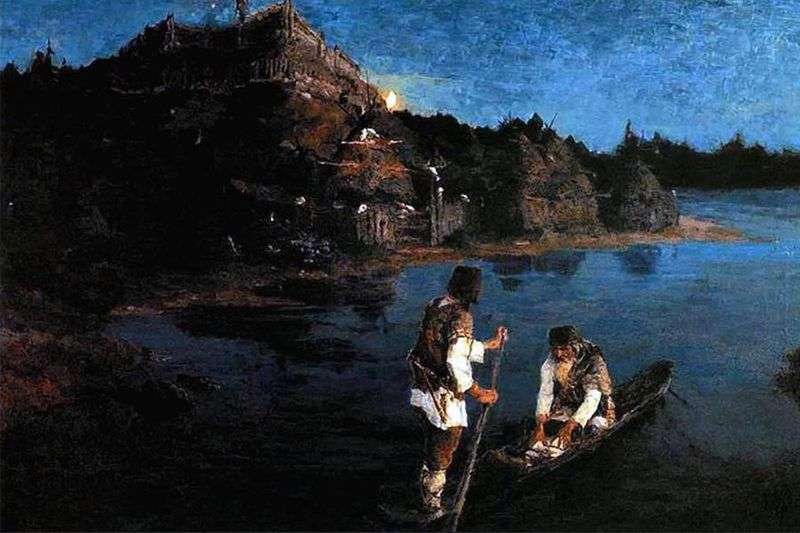 Messenger. The clan was born on the clan by Nicholas Roerich
Messenger. The clan was born on the clan by Nicholas Roerich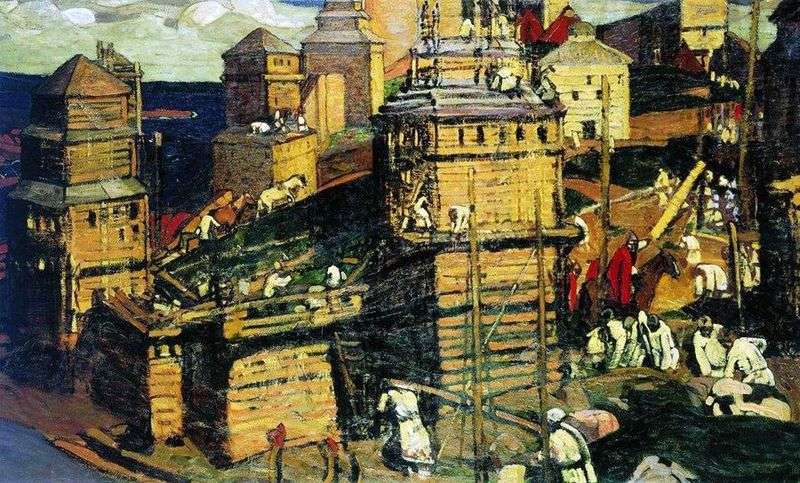 The city is being built by Nicholas Roerich
The city is being built by Nicholas Roerich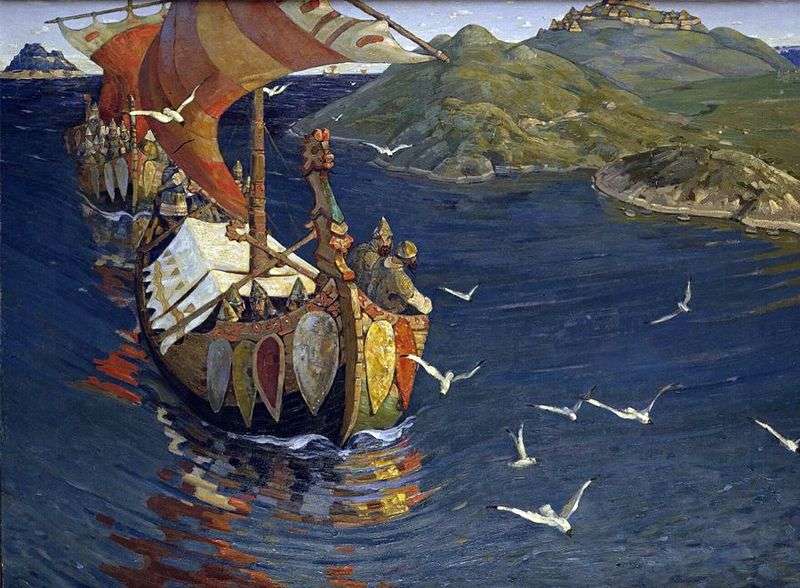 Overseas guests by Nicholas Roerich
Overseas guests by Nicholas Roerich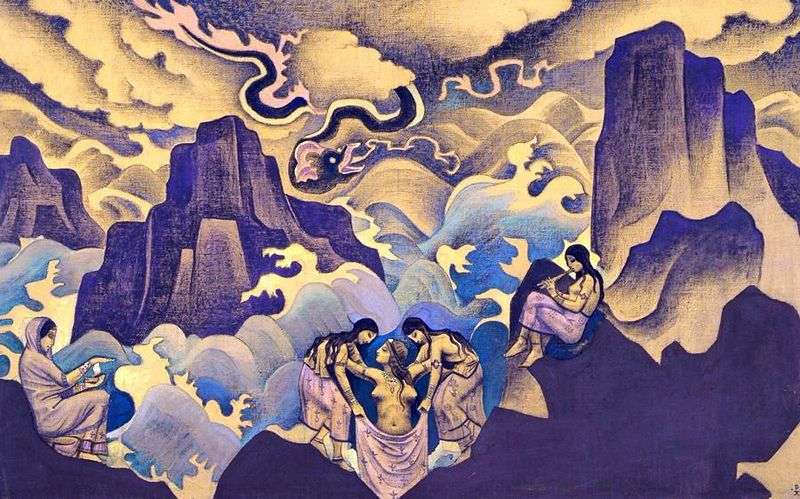 Ancient Serpent by Nicholas Roerich
Ancient Serpent by Nicholas Roerich Saint Sergius of Radonezh by Nicholas Roerich
Saint Sergius of Radonezh by Nicholas Roerich Snow Maiden by Nicholas Roerich
Snow Maiden by Nicholas Roerich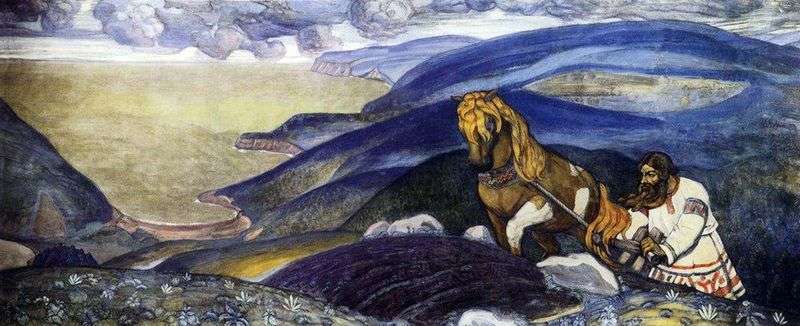 Mikula Selyaninovich by Nicholas Roerich
Mikula Selyaninovich by Nicholas Roerich